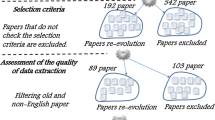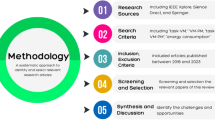Abstract
The main obstacles in mass adoption of cloud computing for database operations in healthcare organization are the data security and privacy issues. In this paper, it is shown that IT services particularly in hardware performance evaluation in virtual machine can be accomplished effectively without IT personnel gaining access to actual data for diagnostic and remediation purposes. The proposed mechanisms utilized the hypothetical data from TPC-H benchmark, to achieve 2 objectives. First, the underlying hardware performance and consistency is monitored via a control system, which is constructed using TPC-H queries. Second, the mechanism to construct stress-testing scenario is envisaged in the host, using a single or combination of TPC-H queries, so that the resource threshold point can be verified, if the virtual machine is still capable of serving critical transactions at this constraining juncture. This threshold point uses server run queue size as input parameter, and it serves 2 purposes: It provides the boundary threshold to the control system, so that periodic learning of the synthetic data sets for performance evaluation does not reach the host’s constraint level. Secondly, when the host undergoes hardware change, stress-testing scenarios are simulated in the host by loading up to this resource threshold level, for subsequent response time verification from real and critical transactions.



















Similar content being viewed by others
References
Foster, I., Zhao, Y., Raicu, I., and Lu, S.Y., Cloud Computing and Grid Computing 360-Degree Compared. Grid Comput. Environ. Workshop: 1–10, 2008.
Cui, L. Z., Zhang, T. T., Xu, G. Q., and Yuan, D., A scheduling algorithm for multi-tenants instance-intensive workflows. Appl. Math. Inf. Sci. 7(1):99–105, 2013.
Chen, W., Yin, K. C., Yang, D. L., and Hung, M. C., Data migration from grid to cloud computing. Appl. Math. Inf. Sci. 7(1):399–406, 2013.
Babar, M.A., and Chauhan, M.A., A tale of migration to cloud computing for sharing experiences and observations. In: Proceeding of the 2nd International Workshop on Software Engineering for Cloud Computing. pp 50–56, 2011.
Kumar, V., and Garg, K. K., Migration of services to the cloud environment: Challenges and best practices. Int. J. Comput. Appl. 55(1):1, 2012.
Anonymous, TPC Benchmark, revision 2.14.4, 2012.
Vishwanath, K., and Nagappan, N., Characterizing Cloud Computing Hardware Reliability. In: Proceedings of the 1st ACM symposium on Cloud computing. pp 193–204, 2010.
Bichler, M., and Setzer, T., Admission control for media on demand services. J. Serv. Orient. Comput. Appl. 1(1):65–73, 2007.
Neter, J., Kutner, M., Nachtsheim, C., and Wasserman, W., Applied Linear Regression Models. The McGraw-Hill Companies, Inc., USA, pp 4–36, 1996.
Khatua, S., Ghosh, A., and Mukherjee, N., Optimizing the utilization of virtual resources in Cloud environment. In: 2010 IEEE International Conference on Virtual Environments, Human-Computer Interfaces and Measurement Systems. pp 82–87, 2010.
Ghoshal, D., Canon, R. S., and Ramakrishnan, L., I/O Performance of Virtualized Cloud Environments. In: In Proceeding of the 2nd International Workshop on Data Intensive Computing in the Clouds. pp 71–80, 2011.
Wang, X. W., Sun, J. J., Li, H. X., Wu, C., and Huang, M., A reverse auction based allocation mechanism in the cloud computing environment. Appl. Math. Inf. Sci. 7(1):75–84, 2013.
Xhafa, F., and Abraham, A., Computational models and heuristic methods for Grid scheduling problems. Futur. Gener. Comput. Syst. 26(4):608–621, 2010.
Li, Q., and Guo, Y., Optimization of resource scheduling in cloud computing. In: 12th International Symposium on Symbolic and Numeric Algorithms for Scientific. Computing 2010:315–320, 2010.
Beloglazov, A., Abawajy, J., and Buyya, R., Energy-aware resource allocation heuristics for efficient management of data centers for Cloud computing. Futur. Gener. Comput. Syst. 28(5):755–768, 2012.
Beloglazov, A., and Buyya, R., Managing overloaded hosts for dynamic consolidation of virtual machines in cloud data centers under quality of service constraints. IEEE Transactions on Parallel and Distributed Systems, 2012 (PrePrint).
Andrzejak, A., and Silva, L., Deterministic models of software aging and optimal rejuvenation schedules. In: IEEE International Symposium on Integrated Network Management. pp 159-168, 2007.
Vaidyanathan, K., and Trivedi, K. S., A comprehensive model for software rejuvenation. IEEE Trans. Dependable Secure Comput. 2(2):124–137, 2005.
Lupse, O., Vida, M., and Stoicu-Tivadar, L., Cloud Computing and Interoperability in Healthcare Information Systems. In: The First International Conference on Intelligent Systems and Applications. pp 81–85, 2012.
Ahuja, S., Mani, S., and Zambrano, J., A survey of the state of cloud computing in healthcare. Netw. Commun. Technol. 1(2):12–19, 2012.
Kumar, V., Swetha, M., Muneshwara, M. S., and Prakash, S., Cloud Computing: Towards case study of data security mechanism. Int. J. Adv. Technol. Eng. Res. 2(4), 2012.
Padhy, R., Patra, M., and Satapathy, S., Design and implementation of a cloud based rural healthcare information system model. Univ. J. Appl. Comput. Sci. Technol. 2(1):149–157, 2012.
Hamlen, K., Kantarcioglu, K., Khan, L., and Thuraisingham, B., Security issues for cloud computing. Int. J. Inf. Secur. Priv. 4(2):39–51, 2010.
Zhang, R., and Liu, L., Security models and requirements for healthcare application clouds. In: IEEE 3rd International Conference on Cloud. Computing 2010:268–275, 2010.
Donahue, S., Can cloud computing help Fix health care. Cloudbook J. 1(6), 2010.
VMWare, VMware Infrastructure Architecture Overview. VMWare Inc., 2006.
Tan, C. H., and Teh, Y. W., Harnessing cloud computing for dynamic resource requirement by Database Workloads. J. Inf. Sci. Eng. 29(5), 2013 (PrePrint).
Mohri, M., Rostamizadeh, A., and Talwalkar, A., Foundations of Machine Learning. MIT Press, MA, USA, 2012.
Banga, G., and Druschel, P., Measuring the Capacity of a Web Server. In: Proceeding of the USENIX Symposium on Internet Technologies & Systems, pp 61–71, 1997.
Mosberger, D., and Jin, T., httperfm A Tool for Measuring Web Server Performance. ACM SIGMETRICS Performance Evaluation. 26(3):31–37, 1998.
Allen, A. O., Probability, statistics, and queuing theory with computer science applications, 2nd edition. Academic Press, Inc., San Diego, CA, USA, 1990.
Little, J. D. C., A proof for the queuing formula: L = ?W. Oper. Res. 9(3):383–387, 1961.
Zadeh, L. A., Fuzzy logic = computing with words. IEEE Trans. Fuzzy Syst. 4(2):103–111, 1996.
Kleinbaum, D. G., Kupper, L. L., Muller, K. E., and Nizam, A., Applied regression analysis and other multivariable methods. Duxbury Press, Pacific Grove, CA, USA, 1998.
Hanmer, R., Software Rejuvenation. Alcatel-Lucent, 2010.
Conflict of interest
The authors declare that there is no conflict of interest in publishing this manuscript.
Author information
Authors and Affiliations
Corresponding author
Rights and permissions
About this article
Cite this article
Tan, CH., Teh, YW. Synthetic Hardware Performance Analysis in Virtualized Cloud Environment for Healthcare Organization. J Med Syst 37, 9950 (2013). https://doi.org/10.1007/s10916-013-9950-7
Received:
Accepted:
Published:
DOI: https://doi.org/10.1007/s10916-013-9950-7




